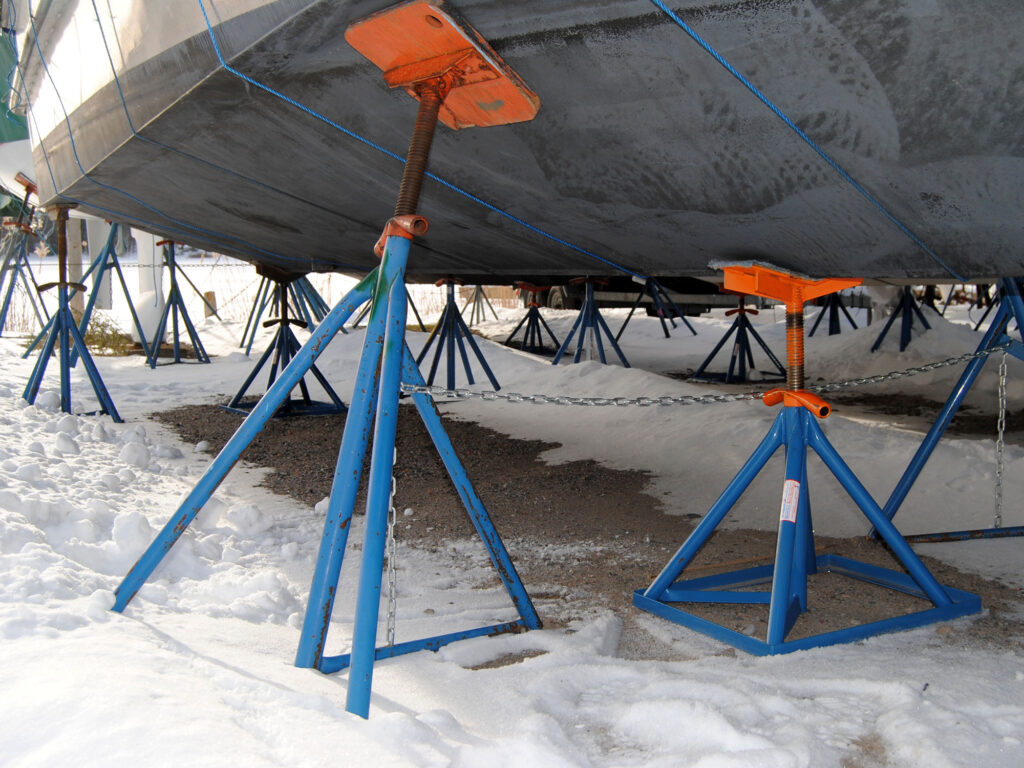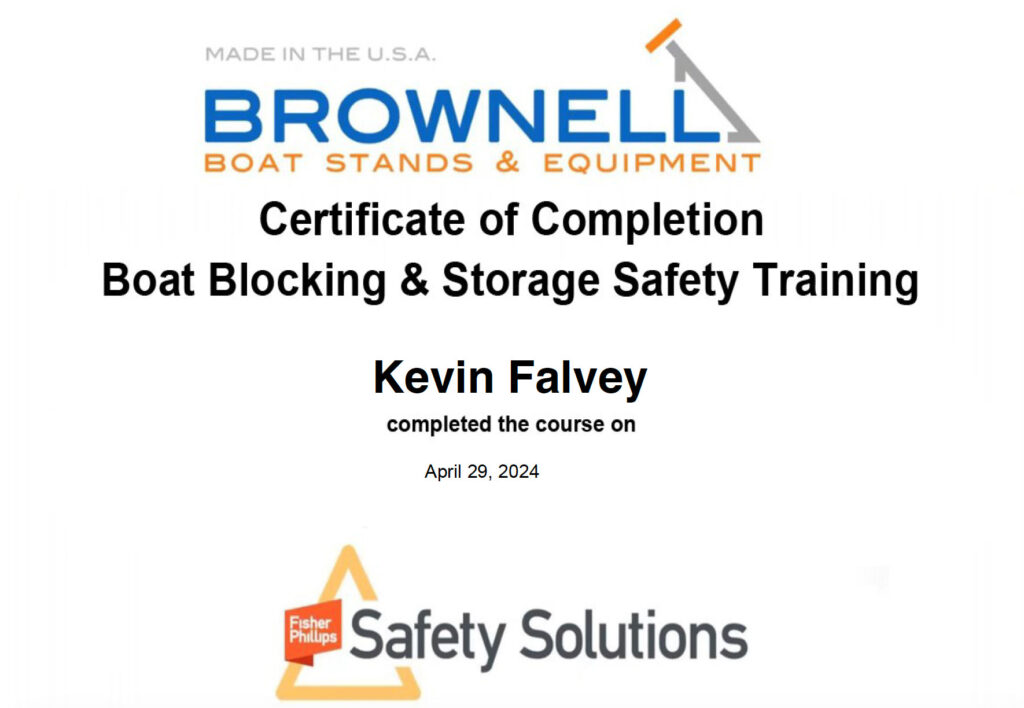Boat Stand Safety
 Deep-V boats are best served using sailboat stands at the bow, because their geometry is better for the steeper angles. Also shown is a keel stand and the use of chain, which must be used with sailboat stands. Brownell Boat Stands have a special chain retainer – a “T” slot–built-in to aid in the use of chain.
Courtesy Brownell Boat Stands
Deep-V boats are best served using sailboat stands at the bow, because their geometry is better for the steeper angles. Also shown is a keel stand and the use of chain, which must be used with sailboat stands. Brownell Boat Stands have a special chain retainer – a “T” slot–built-in to aid in the use of chain.
Courtesy Brownell Boat Stands
As one who worked full-time in a boatyard, I’ve got hands-on experience using boat stands. To this day, my own boat spends the Long Island winter on my own property on boat stands, as did the family’s boats when I was a kid.
The main thing I can share from this lifetime of experience is that supporting a boat on land can be dangerous. It is not something the inexperienced should just assume is just another DIY project. There’s a lot of little details that this job requires that the uninitiated may not see as obvious.
That’s why when I heard that Brownell Boat stands was offering an on-line course that teaches the safe and proper way to use boat stands, I signed up and took the course (I scored a 98 and got a nifty certificate). The Brownell course is worth the $99 bucks in my opinion for anyone who’s boat may spend time on the hard.
Again, blocking up a boat is dangerous. Leaving it to the pros is probably the best bet for most boaters. However, knowing the proper techniques and safety protocols can help boatowners subbing-out the job to know whether their boat is properly and safely supported. An improperly supported boat can be grievously damaged by improper support. Marine surveyors I know can recount many cases involving such damage. And, incorrect placement or use of boat stands can lead to personal injury or even death.
 The author’s certificate for having completed the course.
Kevin Falvey
The author’s certificate for having completed the course.
Kevin Falvey
So, what’s in the Brownell course? Here are some of the points covered with respect to powerboat storage (sailboats require some different techniques). This is in no way a complete list, but rather represents a handful of the topics covered.
Weight: Keel blocking, or Brownell Keel Stands, carry the weight of the boat. At a minimum there must be at least two sets of keel support per boat
Number: A minimum of four boat stands should be used for powerboats, with one pair of stands for every eight-to-ten feet of boat LOA a good rule to follow, according to Brownell.
Stability: Place plywood under boat stands on soft or unstable ground.
Tarps: Never tie tarps or boat covers to boat stands. A strong wind can put a great force on boat stands if this is done. Doing so can and has resulted in fallen boats and injured people.
Check: Check stands supporting boats regularly for tightness and balance, as changing weather and temperature may affect ground conditions. Also check that the boat is not sagging or flexing. Freeze and thaw cycles; periods of heavy rain, wind or snow; seasonal changes; these are all events that mean you MUST check the boat stands.
Placement: Boat should be placed so that they are located beneath major structural elements such as the transom and structural bulkheads. If they are not so placed, hull damage may result.
Deep-V Boats: Boats with deep-V hulls may need to use sailboat (Brownell’s “SB” designation) stands at the bow for a proper fit. The SB stands are designed and manufactured to provide support at greater angles than other boat stands.
For more information about boat stands, blocking boats safely and properly, visit Brownell at: boatstands.com.
The post Boat Stand Safety appeared first on Boating Mag.
- Home
- About Us
- Write For Us / Submit Content
- Advertising And Affiliates
- Feeds And Syndication
- Contact Us
- Login
- Privacy
All Rights Reserved. Copyright , Central Coast Communications, Inc.